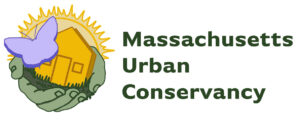Status: Complete!
Project: We transformed a grass front lawn of a triple-decker rental property in Worcester into a no mow, self-sustaining, flowering garden of native plants and ground cover. This no-maintenance lawn garden will pay for itself within a few years through savings from never again having to mulch, mow, fertilize, clear or prune. Weeding will be required. This model will save thousands of dollars over time for its owner, and thousands of hours spent on maintenance. And importantly, no longer operating mowers, trimmers and leaf blowers will prevent incalculable tons of carbon pollution.
This yard garden already provides residents with an attractive, aromatic space, with an inviting footpath and a bench matching the natural aesthetic.
This garden will also serve as an educational model for visiting students, and as an appealing example for other property owners who want to reduce their lawn maintenance and energy budgets, dress up their yards and negate pollution from their rental ownership.
MUC seeks to duplicate this model by working in partnership with property owners to transform their grass yards into self-sustaining (mowless!), species-rich native plant gardens. MUC will coordinate details: horticultural consultation, native plant purchase, preparation and planting.
MUC Project Progress
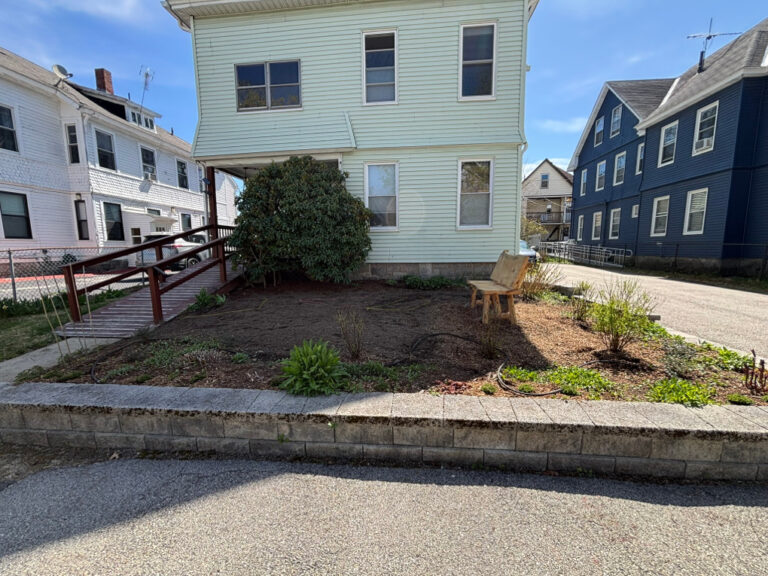
This mid-construction picture shows how we remove grass first and temporarily mulch over it while we wait for deliveries. This owner elected to purchase a bench as a human focal point and to give purpose to the yard as it temporarily loses its vegetation.
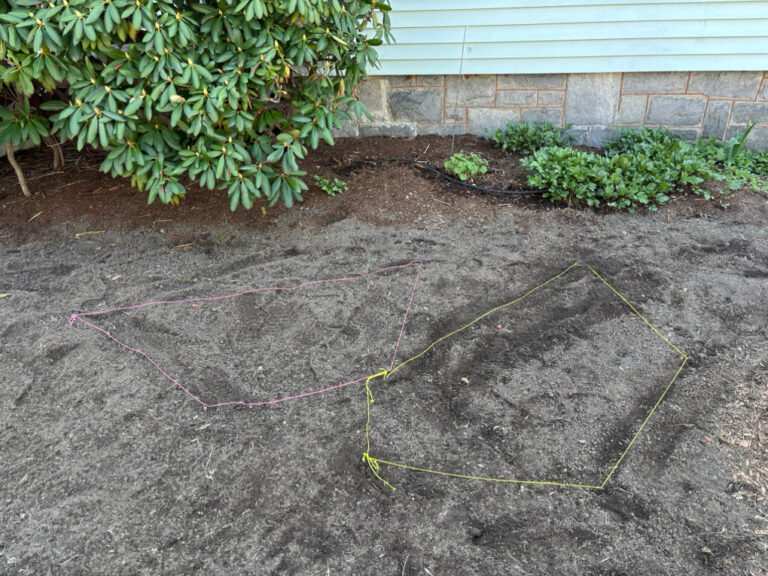
These drift markers use garden staples and mason’s twine to indicate where recently arrived plants should go. Marking drifts helps manage scattered delivery dates over a lawn replacement, where we have to plant some deliveries before the buffers, borders and ground cover have arrived. We leave the markers in place until the project is fully planted. They serve as reminders of which areas we’ve already planted and will help subsequent deliveries be planted with less measuring. CC BY-SA 4.0 Massachusetts Urban Conservancy.
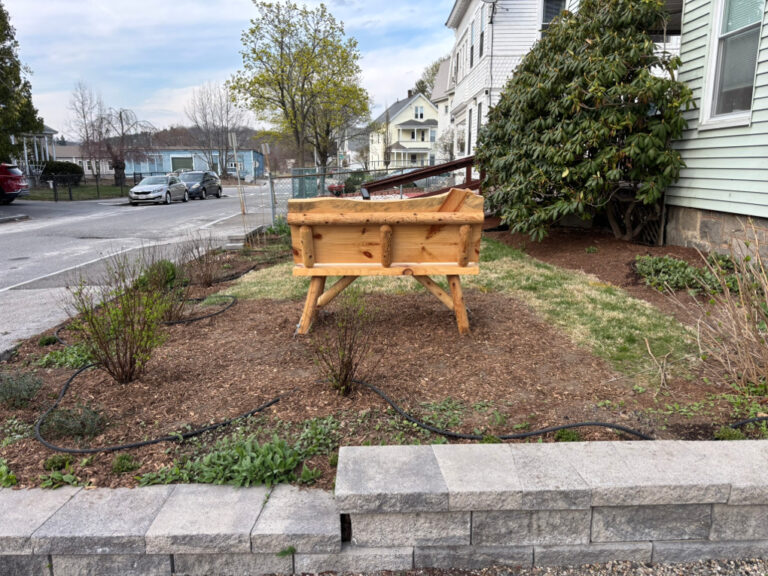
Until native plants are established, they do need watering. In this project, we have run trickle hoses from a timer on an exterior spigot. This assures that the project sets in place without the landlord or renters having to water. The lawn is partially intact in this photograph, but will be removed soon after.
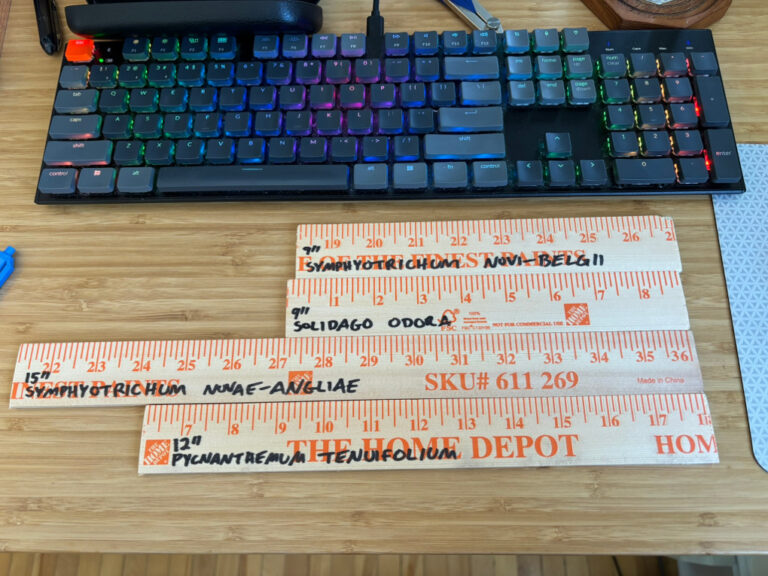
Simple yardsticks make easy-to-use planting spacers to achieve the desired density for a lawn replacement. Making these can be a hands-on learning experience combining science and basic wood shop skills depending on age. We use these as “not to exceed” distances; plants must be no further apart than the spacer or we’ll create an opportunity for weeds to grow.
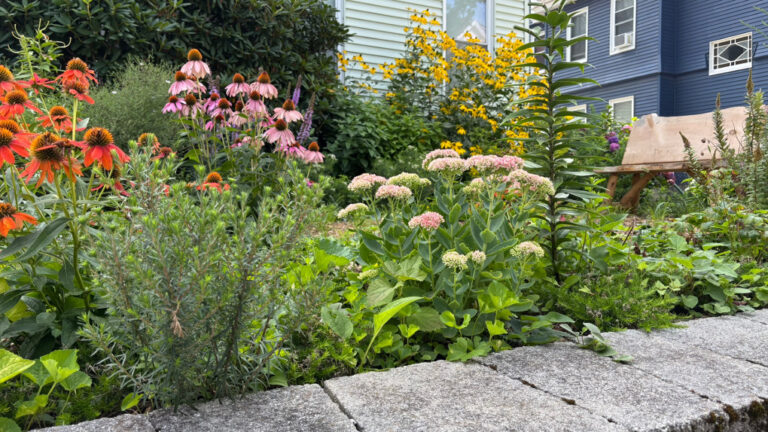
Plantings were completed July 2025!
